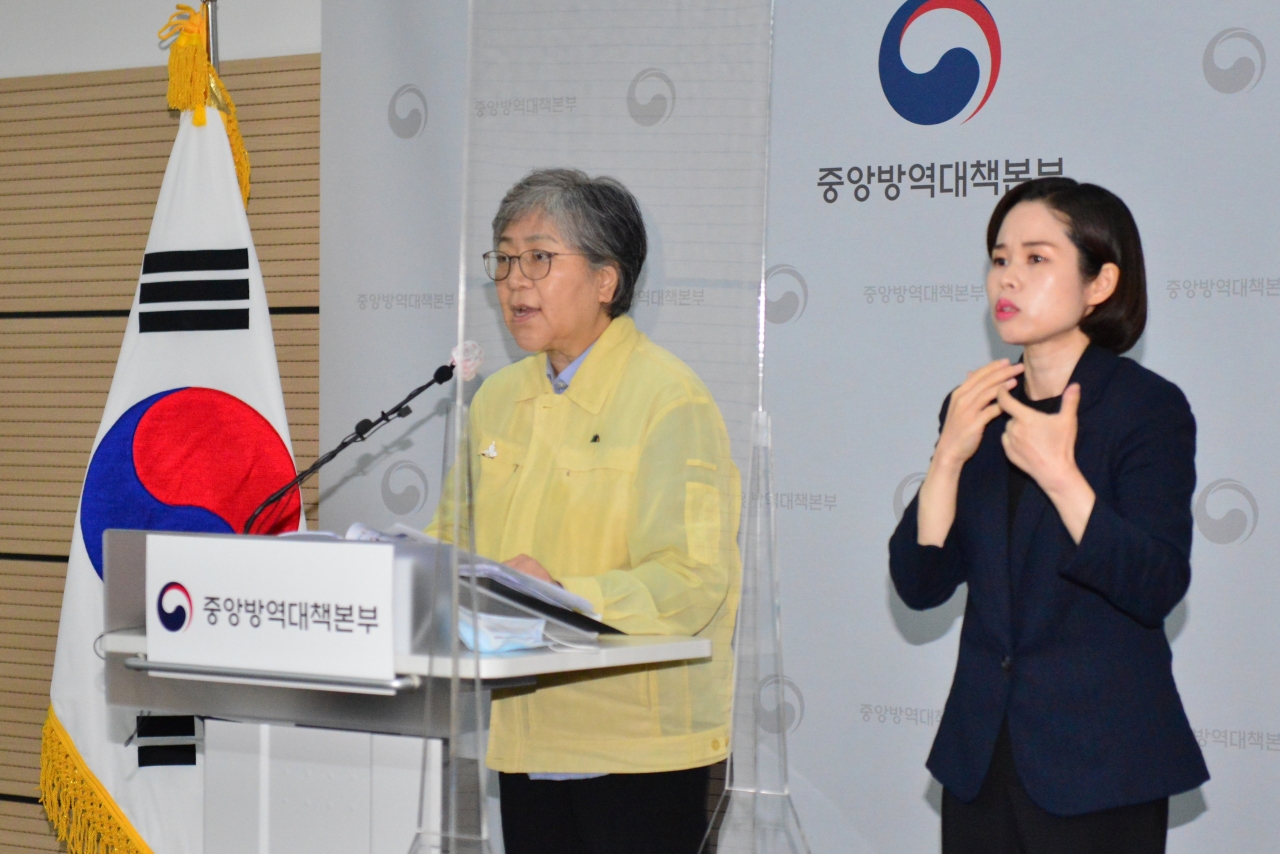Korea braces for ‘twindemic’ of flu, COVID-19
Contact tracing falls short, ‘untraceable’ cases hit record high
By Kim ArinPublished : Sept. 17, 2020 - 18:10

Korea is bracing for the flu season coinciding with another wave of COVID-19, which may result in a dreaded “twindemic.”
It is possible to catch both respiratory illnesses at the same time. Health authorities last week confirmed a local case of coinfection with influenza and the new coronavirus.
Jung Eun-kyeong, chief of the Korea Disease Control and Prevention Agency, said in a Sept. 10 press briefing that a patient had tested positive for both viruses. “Not much is known about the effect of the coinfection in clinical outcomes so far,” she said.
Having more people get vaccinated against the flu will be a critical weapon in the fall and winter, when the circulation of the virus peaks.
Children under 18 and older adults aged 62 or above are eligible for flu shots free of charge under this year’s vaccination program. “Everyone with underlying medical conditions or otherwise at high risk of developing serious complications from the infection is recommended to get a flu shot,” said Jung.
“We don’t have a COVID-19 vaccine but we have one for the flu. Getting vaccinated is the best way to protect yourself as well as the community,” said pulmonologist Dr. Chun Eun-mi of Seoul’s Ewha University Medical Center.
As symptoms of the flu and COVID-19 are similar, “getting the shot will save you the hassle of confused visits to the clinic,” she said.
A flu shot’s effectiveness varies depending on factors such as age, and some people who get the shot may still get sick. But the severity can be reduced if a person is vaccinated, according to the Ministry of Health and Welfare’s public campaign.
Chun said among people who are not covered by the state program, those living or working with medically vulnerable people should be getting the flu shot as well.
While it’s still early to tell how severe this flu season will be, improved compliance with face mask-wearing and social distancing can mitigate the spread. “Flu cases almost disappeared early this year,” she said.
Australia’s flu season, which normally runs during its winter months of June through August, was milder than usual this year. The winter in the northern hemisphere may echo these patterns, according to Chun.
A testing kit for diagnosing the two viruses at once is in the works.
The Ministry of Food and Drug Safety on Sept. 7 approved the clinical trials of diagnostic assay for screening flu and COVID-19. The assay is expected to be authorized by next month, according to a senior drug safety official.
Korea added 153 more cases -- 145 locally transmitted and eight imported -- in the last 24 hours ending Wednesday midnight, pushing the cumulative number of reported cases to 22,657.
Cases tied to international travel account for about one in 10 cases confirmed in the past month. But as global cases climb past 30 million, keeping border measures in place is still important, health authorities say.
“Considering the long incubation period of the disease, the mandatory 14-day quarantine upon arrival is still necessary to detect infections and prevent spread in communities,” said Jung of the KDCA.
With a major holiday ahead at the end of this month, health officials anticipate a possible rise in local cases.
As spending dwindles and small businesses suffer, Korea moved into a less stringent tier of physical distancing on Monday despite not meeting benchmarks of daily case count of below 100. The softened measures will be in place for two weeks until right before the Chuseok holiday falling Sept. 30-Oct. 4.
“The impact of the relaxed physical distancing restrictions on case growth will manifest in a week or two’s time,” said senior health official Yoon Tae-ho in a closed door press briefing.
Meanwhile, the proportion of “untraceable” cases among 2,055 cases confirmed in the last two weeks hit a record high of 25.4 percent. This means for as many as 522 patients diagnosed over the period, the point of infection was unknown.
As the number of older patients surge, deaths are mounting fast. At least 43 deaths were recorded this month alone, making up 11.5 percent of the 372 known deaths related to COVID-19. The overall fatality rate is 1.64 percent. For the over-80s, the rate is much higher at 20.6 percent.
As of Wednesday, 91.8 percent of 517 critical care beds in the country were filled, leaving only 42 available. At designated coronavirus hospitals, whose combined bed capacity totals 4,138, the bed occupancy rate was 36.9 percent.
The number of recoveries reached 19,543, up 233 from a day prior, putting the recovery rate at 86.2 percent. Since late June, the bar for discharging patients has been adjusted to free up bed spaces. Patients who remain without symptoms for 10 consecutive days since diagnosis are deemed officially recovered and released from medical care.
Korea has carried out 2,178,832 tests since Jan. 3. This translates to around 42,000 tests performed per million people. The rates of positivity in testing stand at around 1 percent.
By Kim Arin (arin@heraldcorp.com)









![[Kim Seong-kon] Democracy and the future of South Korea](http://res.heraldm.com/phpwas/restmb_idxmake.php?idx=644&simg=/content/image/2024/04/16/20240416050802_0.jpg&u=)








![[KH Explains] Hyundai's full hybrid edge to pay off amid slow transition to pure EVs](http://res.heraldm.com/phpwas/restmb_idxmake.php?idx=652&simg=/content/image/2024/04/18/20240418050645_0.jpg&u=20240418181020)

![[Today’s K-pop] Zico drops snippet of collaboration with Jennie](http://res.heraldm.com/phpwas/restmb_idxmake.php?idx=642&simg=/content/image/2024/04/18/20240418050702_0.jpg&u=)